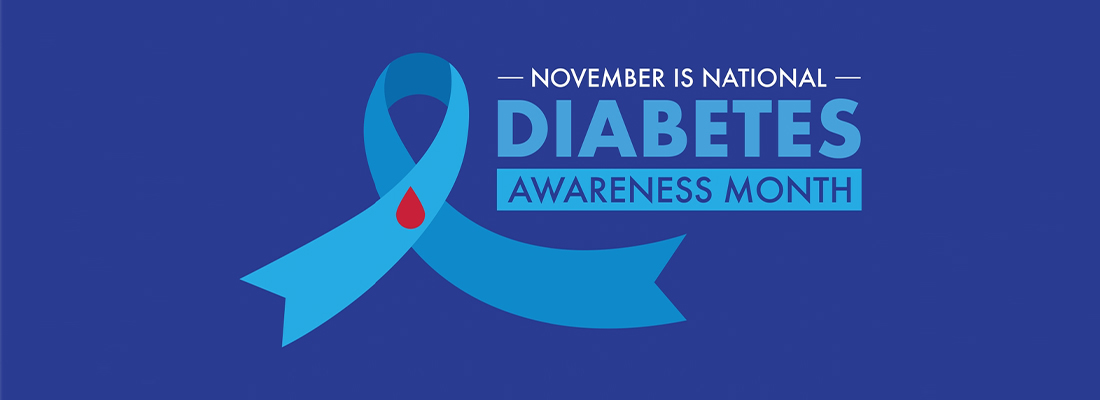
What is American Diabetes Awareness Month?
American Diabetes Awareness Month, observed annually in November, shines a spotlight on the growing prevalence of diabetes in the U.S. and globally. Organized by the American Diabetes Association (ADA) and other health organizations, the month serves as a call to action to educate communities, promote prevention, and advocate for improved access to care.
The theme for 2024 underscores the importance of collective efforts in combating diabetes through awareness campaigns, public health initiatives, and individual lifestyle changes. Diabetes affects millions of Americans, and raising awareness is critical to reducing its impact.
The Impact of Diabetes in America
Diabetes is a chronic disease characterized by high blood sugar levels resulting from inadequate insulin production or ineffective insulin use. According to the CDC, over 37.3 million Americans have diabetes, with approximately 1 in 5 unaware of their condition. Another 96 million adults are estimated to have prediabetes, a condition that increases the risk of developing type 2 diabetes.
Key Statistics Highlighting the Impact
- Health Implications: Diabetes increases the risk of heart disease, kidney failure, blindness, and nerve damage.
- Economic Burden: The American Diabetes Association reports that diabetes costs the U.S. approximately $327 billion annually, encompassing medical expenses and lost productivity.
- Disparities: Minority groups such as African Americans, Hispanic/Latino populations, and Native Americans face a higher prevalence of diabetes due to socioeconomic and systemic factors.
Addressing these challenges requires not only effective medical interventions but also widespread public awareness and education.
The Impact of Diabetes Education and Awareness H2
Education plays a pivotal role in reducing the prevalence of diabetes. Through initiatives during American Diabetes Awareness Month, individuals can learn about risk factors, early signs, and lifestyle modifications to prevent or manage diabetes.
Key Benefits of Diabetes Education
- Early Detection and Prevention: Campaigns encourage screenings to identify diabetes or prediabetes early.
- Lifestyle Changes: Emphasizing balanced diets, physical activity, and weight management can reduce diabetes risk by up to 58% in prediabetic individuals.
- Empowering Communities: Knowledge equips communities to demand better healthcare access and resources.
Diabetes awareness campaigns have consistently demonstrated that education and proactive measures can curb the progression of diabetes and improve patient outcomes.
How Healthcare Providers Can Promote Diabetes Awareness
Healthcare providers play a crucial role during American Diabetes Awareness Month by fostering patient engagement and community education.
Practical Steps for Providers
- Host Community Screenings: Organize events offering free or low-cost diabetes screenings in underserved areas.
- Share Educational Resources: Distribute pamphlets or host webinars focusing on diabetes management and prevention.
- Social Media: Use platforms to share facts, testimonials, and preventive tips.
- Collaborate with Local Organizations: Partner with schools, businesses, and non-profits to expand outreach efforts.
- Encourage Patient Advocacy: Empower patients to share their experiences, helping to reduce stigma and inspire others.
By actively engaging with their communities, providers can amplify the impact of American Diabetes Awareness Month.
FAQs: American Diabetes Awareness Month
Why is November dedicated to diabetes awareness?
November was designated as American Diabetes Awareness Month to align with World Diabetes Day on November 14, honoring Frederick Banting, one of the co-discoverers of insulin.
What are the common symptoms of diabetes?
Common symptoms include increased urination, intense thirst, persistent fatigue, unexplained weight loss, and blurred vision. However, early stages may be asymptomatic, underscoring the need for regular screenings.
How can individuals participate in American Diabetes Awareness Month?
People can participate by attending awareness events, sharing educational materials, wearing blue (the color of diabetes awareness), and supporting fundraising efforts for diabetes research.
Can diabetes be prevented?
Type 1 diabetes cannot currently be prevented, but type 2 diabetes is often avoidable through lifestyle changes such as maintaining a healthy weight, eating a balanced diet, and staying physically active.
What resources are available for diabetes education?
Organizations like the ADA, CDC, and local health departments offer a wealth of resources, including online tools, community programs, and educational events.
Conclusion
American Diabetes Awareness Month 2024 serves as a vital reminder of the ongoing fight against diabetes. With more than 37 million Americans affected by the condition, promoting awareness is more important than ever. By educating communities, promoting early detection, and advocating for systemic changes, we can reduce the burden of diabetes and empower individuals to lead healthier lives.
Healthcare providers, patients, and advocates all have roles to play during this impactful month. Together, through awareness and action, we can work towards a future free of diabetes-related complications and disparities.







